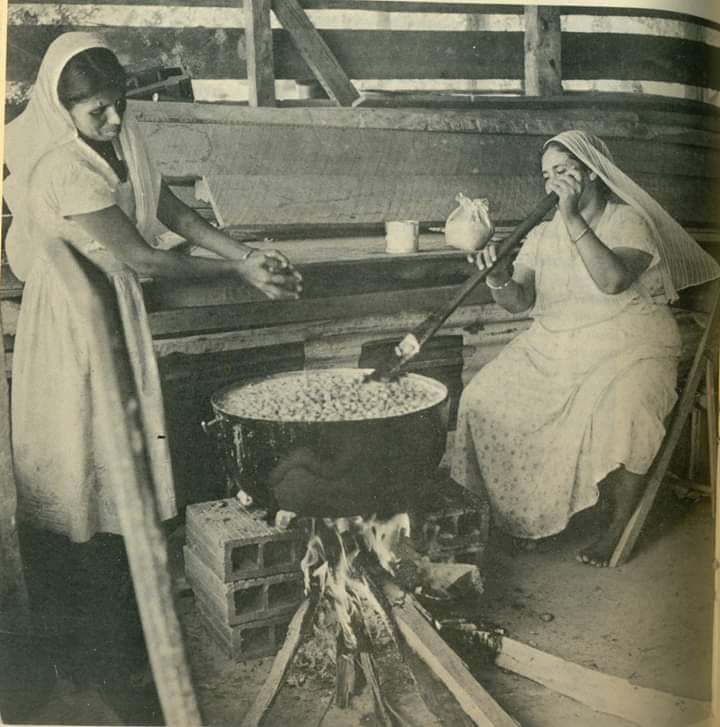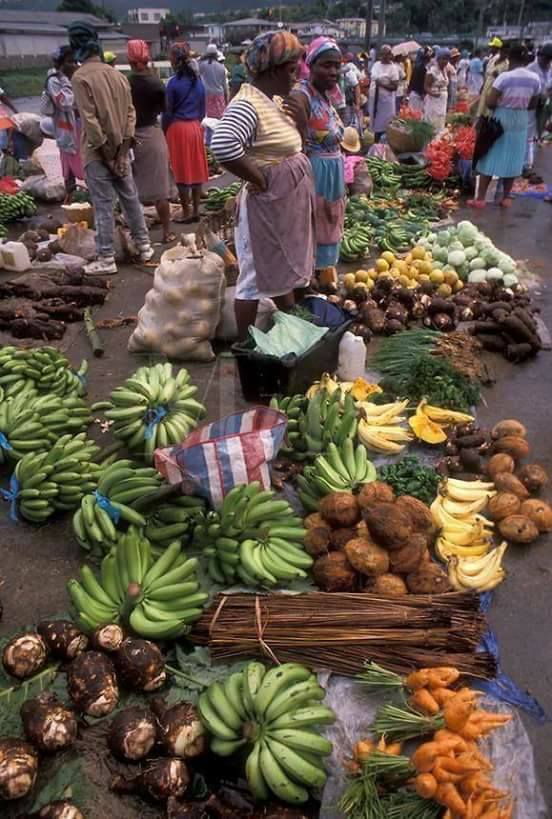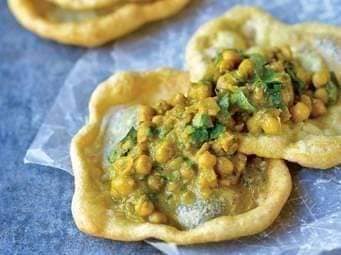|
On a recent trip to Trinidad, English brewer Phil Saltonstall was introduced to some of the best tasting chocolate in the world, made, of course, from trinitario cocoa beans. So, naturally, he did what he does best – he made a beer out of it.
“If you’re a brewer you look for flavour pairings in the world that exist already and you just put them in the beer,” Saltonstall told Business Day in a telephone call last week. The first batch of Saltonstall’s Brass Castle Brewery’s Trinitario chocolate stout was canned just over two weeks ago and it’s already proved popular. “I have to ringfence a couple so I can send it to Trinidad or else it’ll be gone,” he chuckled. The beer is, of course, named after the eponymous cocoa variety that originated in Trinidad in the late 17th century. Trinitario, a natural hybrid of the forastero and criollo varieties, is considered one of the world’s finest-flavoured cocoas. The Trinidad Fine Cocoa Company, with which Saltonstall consulted, advised him on using trinitario cocoa shells and nibs to enhance the already chocolatey flavours that naturally occur in dark beer. (He was introduced to them through his wife, British High Commissioner Harriet Cross.) “We have done a chocolate beer before, but we’ve done it with cocoa powder – and probably not very good cocoa powder. It was meant to be like a Black Forest gateau, with cherries and chocolate. It was really nice and chocolatey, with the cherries, and that was cool. “I have since been educated to the fact that Trinidad has the best chocolate in the world, and making that connection with TT fine cocoa caused me to understand that I can use cocoa better – that I shouldn’t just be using powder, I should be using cocoa nibs and cocoa shells. So they effectively enhanced my process. "And they also kindly explained that Trinidad has the best chocolate in the world, and if I want to have a real chocolate beer (this is the stuff to use).” Different types of grain and malt (sprouted grain) can give some very gentle chocolate flavours, Saltonstall explained. “You have to look for them, but they are there. What most brewers do is, they will add a chocolate flavouring or essence or something like that. But when I had the option to have some of the best chocolate in the world, that’s obviously (better).” Brass Castle tries to make its base as chocolatey as possible and then overlay that with the fine cocoa nibs during the fermentation and conditioning phases. “The finished beer is very luscious and chocolatey and doesn’t have any of those fake aspects, and that’s all testament to how good the cocoa and chocolate that we’ve used (are).” Beer is made from fermenting cereal grains. The first step is creating a mash, where the grains are mixed with water to form the base liquid and release the sugars that will eventually ferment. Usually, rice husks are used as process aid, preventing the mash from turning into a porridge consistency that needs to be thrown out. Brass Castle Brewery's Trinitario chocolate stout, made, of course, from TT's trinitario cocoa beans. - But, Saltonstall was pleased to discover, cocoa shells did the same job and imbued the mash with a rich chocolate flavour. “It’s cool, because I didn’t realise that cocoa shells are just kind of thrown away because they’re no good for chocolate, but actually there’s still flavour there, so they are quite good in the mashing process and brewing.” The next phases – fermentation and conditioning – are when the nibs, shelled cocoa seeds broken into pieces that have a deep, rich cocoa flavour, are added to the mix to really bring create that chocolatey, beery goodness. Brass Castle is based in the town of Moulton in North Yorkshire. A few miles away is the city of York, which Saltonstall said has a history of being in the chocolate trade. “I talked to chocolatiers in the town and they are totally thrilled that we are doing something with trinitario cocoa nibs, because they get it. They know how good the nibs are and they know that it’s in relatively short supply. "It's lovely to see them get enthusiastic and passionate about it, and hopefully drinkers will get the same effect.” Saltonstall has not yet tapped into the huge Caribbean diaspora in the UK – covid19 restrictions have made that difficult at the moment, so the usual avenues, like bars, restaurants and even Notting Hill Carnival have been restricted. He’s interested in looking into it, though, and even directly reaching out to some high-profile Trinis and sending them some of the beer. “In normal times this would be obvious and it would be nice to get the feedback from the diaspora.” Brass Castle is a small craft brewery, so it produces about 4,000 440ml cans of beer at a time. He’s all but used up his initial 25-kg supply of shells and nibs in production, so he’s actively researching how to import a supply. “I was lucky because I was able to transport this back from Trinidad myself, but I’m now talking to people who can ship it. I’m told shipping is pretty straightforward because (despite covid19 restrictions) commerce is still working and goods are still transiting. So my understanding is that getting hold of some more is not problematic. "Of course, everything is slightly more difficult now but getting more nibs and shells is not (impossible).” He’s excited to start back production, though, and already envisions the beer being a regular offering. It’s on sale at the brewery and online, as well as some shops. It also proved to be a surprise Valentine’s Day hit, with lots of orders coming in before February 14. He also hopes to be able to send some soon to Trinidad – and maybe get a new supply of nibs in return. And as far as he’s concerned, even though some people might see chocolate stout as a dessert drink, the beer will go with anything. “People drink and eat what they like to eat. I know there’s a whole host of people who would want to drink it all the time.” The labelling. though, is reminiscent of a chocolate bar in the colours of the TT flag. “I might change the packaging at some point, but I hope that the name and the look are simple enough for people to understand quickly what it is, but also for people who know to appreciate that it’s a Trinidadian beer with Trinidadian ingredients.” https://newsday.co.tt/.../british-brewer-infuses-beer.../ Since the early 70s, Keith 'Jumbo' Martin has been a fixture at cricket matches selling nuts. He earned himself a reputation in the Queen's Park Oval for his accuracy in throwing packs of nuts to customers seated some distance away in the bleachers. Twenty years or so before Jumbo came on the scene, there was another well known nuts man nicknamed 'mile a minute'. This nuts vendor was a short, slim Chinese gentleman who used to walk around the Queen's Park Savannah at a brisk pace selling his peanuts.
Nuts have become a popular street food along the busy highways of our nation. The nut vendors are mostly found by the traffic lights on these highways hustling sales when the traffic is at a standstill. In case you are wondering, a pack of nuts (salted or fresh) cost $5, same price as a doubles. Fun fact: ever see a nuts man shaking the pack of nuts? That's to tell if they are salted or fresh as the ones with salt make a noise when the grains move about in the bag. Source: Virtual Museum of TT , Feb 17, 2021 Laura Roberts-Nkrumah grew up in St. James, Trinidad and Tobago, a community rich with plant life.
“There were many fruit trees,” she says. It was this proximity to nature’s bounty that fostered her early attraction to flora and food, an interest that would eventually lead to her outstanding career as a scientist, agriculturalist, educator and Caribbean pioneer in the study and cultivation of breadfruit. Professor Roberts-Nkrumah is Professor of Crop Science and Production within the Department of Food Production at UWI St Augustine’s Faculty of Food and Agriculture (FFA). During her more than 30-year career she has trained many students in the science and production of various crops. “My primary career goal as a member of academic staff, and former student of this faculty, was to make a difference, in at least in some small way, to the food and agriculture sector in the Caribbean. I have shared this goal with my students; their training at the FFA was about much more than certification; it was about capacity building for the development of our countries and region”, she says. Professor Roberts-Nkrumah is most well-known for her work in breadfruit. She has raised the stature of this neglected and underutilised crop, which was traditionally important for food security in the Caribbean but stigmatised as ‘slave food’ and largely ignored by research. Her work includes expanding the range of cultivars (different varieties) in the region through importation, and establishing a germplasm collection at UWI St. Augustine Campus. The collection has been evaluated for growth, development, seasonality, yield, disease resistance, nutritional content and, more recently, there has been DNA characterisation. Studies have been conducted on propagation, orchard management, as well as on consumer acceptance, contribution to food security and farm income. “Most persons are unaware that there are different types of breadfruit. This collection is an educational and research resource that is critical if the commercial potential of breadfruit for human nutrition, and for other methods of utilization, for example, medicine is to developed beyond its current level in T&T and the wider Caribbean”. Based on her work in breadfruit, Professor Roberts-Nkrumah was commissioned to prepare a strategic plan for the development of a breadfruit and breadnut industry in St Kitts and Nevis. She initiated, secured external funding for, and co-convened the first International Breadfruit Conference, which was held in Trinidad and Tobago in 2015. She was also invited to contributeto a review chapter on breadfruit production for the prestigious publication, Horticultural Reviews. “A number of new breadfruit products, as diverse as chips, wines and beauty products are already being produced on a commercial scale elsewhere. My greatest satisfaction would be the emergence of a sustainable breadfruit industry in the region based on innovative products, which is entirely possible with our people’s creativity. Support for multi-disciplinary research and consumer education will be two key requirements” Apart from her work in this area, Professor Roberts-Nkrumah is a pioneering woman in science, who for many years has operated at the highest level of her field. Data from UNESCO’s Institute for Statistics shows that less than 30 percent of the world’s researchers are women, and only around 30 percent of all female students select STEM-related fields in higher education. Recognising the importance of women in the sciences, the UN General Assembly made February 11 the annual International Day of Women and Girls in Science. Professor Roberts-Nkrumah says many women inspired her own journey into the sciences, starting with her grandmother: “She was recognised as a champion farmer in Tobago. My grandmother was an independent and strong woman who continued to farm even in her 70’s. I have fond memories of the delicious fruits, cocoa tea, and high quality cassava, sweet potatoes and pigeon peas that she grew and our family enjoyed.” She admires scientists such as Professor Margaret Sedley, a botanist, whose work was closely linked with the development of the avocado industry in Australia and Professor Ruth Oniang’o, a pioneer in food science and nutrition studies on indigenous crops in Kenya. She was most inspired in her career, however, by Professor Lawrence Wilson, a leader in research on tropical root crops at The UWI, who taught her at both undergraduate and graduate levels. “I admired his insight and creativity as a scientist,” she says. “He instilled in me the significance of basic scientific knowledge for understanding crop physiology and addressing crop production issues.” Professor Roberts-Nkrumah’s legacy of work also includes outreach activities with crop producers and nurseries, and the general public throughout the Caribbean. Apart from providing hands-on training, several manuals and fact sheets have been made available, including manuals on breadfruit propagation and orchard management, which were commissioned by the Food and Agriculture Organisation and are available online. Her work has produced 117 publications, among which is a book titled The Breadfruit Germplasm Collection at the University of the West Indies, St Augustine Campus, a reference text for stakeholders in the breadfruit sector, from scientists, to growers, sellers and consumers. When asked about her career success, she credits her family life: “I consider myself to have been blessed by my family background, which provided stability, focus, a high value on education, strong work ethic and strong Christian values. All of these and the commitment to service were reinforced at school.” As a wife, mother, and daughter, she has had to balance work with family life and responsibilities. This was not always a simple matter but unconditional support from her husband and children helped to make it possible. “They have accompanied me in the field on many occasions,” she says. “As much as possible I limited my travelling for field research in the Caribbean to the school vacation period, when the family could also travel with me. This has paid dividends as I now see the children’s own gardening initiatives and hear them offering ‘on target’ advice to their peers.” Even though she is a scientist, as a young student Professor Roberts-Nkrumah loved English Literature as well. However, her desire for the outdoors pushed her towards science and agriculture. And though she has experienced numerous challenges during her career -- from the very limited scientific literature on breadfruit, to the difficulties of data collection in the field, to having to balance research with her heavy teaching load -- her work has revolutionised the breadfruit sector and has the potential to make a major impact on regional food security. Perhaps more importantly, she followed her passion, found her mission and built a career. “The application of science to food and agriculture is a most worthwhile endeavor. It’s about knowing what you were born to do. Focus, faith and willingness to work for the benefit of others, even with obstacles, will always be rewarding – “Non sine pulvere palmam” (Not without the dust the victory). Source: UWI Campus News, Feb 15, 2021 All Yuh Remember Sunday Morning Market!! The Vendors Outside The Market Use To Have Some Good Deals! Ent Source: Carl Nelson, Trinbago Golden Memories, Jan 31, 2021
Today we had a really enlightening day meeting with farmers who are not just talking about agriculture but those who practice and make a living from it.
What was particularly pleasing to me is to meet young people among the farmers. If they are supported and encouraged, agriculture has quite a future in Tobago. Tobago is fortunate in that it has some of the best soils. The Tobago farmer can support not just the population in Tobago, but can make a considerable contribution to the 1.2 million in Trinidad. We are expecting that some Tobago farmers, existing ones and new ones, will benefit from the provisions that we have made in the budget and that with the assistance they get it will result in an increased food production. Source: FB page of the Hon. Dr. Keith Rowley, October 2020  The black and white photos are of women of East Indian descent preparing food for some special occasion in the 1950s There is no immigrant story that comes without some painful recollections. It is a testimony however to the spirit of ALL Trinbagonians, that we have managed to grow beyond recriminations and become a more unified people despite the will of divisive elements such as politicians and pseudo-religious leaders. It seems odd now in a society that counts doubles as a staple food, and where roti has almost epicurean status in some places, that the derision of the Indo-Trinidadians and their food was once commonplace. One of the first articles I wrote for this newspaper back in 2012, was on the roots of Indo-Trinidadian gastronomy which is anchored firmly in the rations which the labourers received during their contracted residences on the sugar plantations of the island. Though the provisions were sometimes augmented or differed according to the estate, the general issue was as Charles Kingsley described it in 1870: “Till the last two years the new comers received their wages entirely in money. But it was found better to give them for the first year (and now for the two first years) part payment in daily rations : a pound of rice, 4 oz. of dholl, a kind of pea, an oz. of coco-nut oil, or ghee, and 2 oz. of sugar to each adult ; and half the same to each child between five and ten years old.” The variations would usually be the addition of a small quantity of saltfish, dried pepper or potatoes. Eked out by provision gardens, often planted with crops brought from India as seeds in the ‘jahaji’ bundles of the labourers, it laid the foundation of a spicy food culture which is as different from anything produced in India today. Those who have dined on authentic Indian dishes will attest to the immense difference from the deliciously creolized creations of Trinidad. Diversification of the Indo-Trinidadian palate came about in the 1880s when many shopkeepers realized what was necessary to attract a clientele from this ethnic group. Wholesalers began to import a variety of spices and curry ground with a ‘sil and loorha’ became more commonplace. Large quantities of ghee, channa (chickpeas). Essentials like mustard oil began to make their appearance at both rural and urban grocers. Nevertheless, Indo-Trinidadian cooking remained an ‘underground’ scene, unknown to most other ethnic groups and rarely tasted outside of the mud huts where it was prepared unless one was invited as a guest. Tempting talkarees, rotis and meetai (sweets) churned out in the aromatic smoke of an earthen chulha (fireplace) were a well-kept secret, not by dint of cultural isolation alone, but also because of a growing sense of shame and self-loathing. Indo-Trinidadian children who attended government schools or schools operated by denominations other than the Canadian Presbyterian Mission to the Indians (CMI) were ridiculed for the lunches they carried, usually sada roti and some sort of bhagi or talkaree. It inculcated a massive inferiority complex which many carried into adulthood. This is well-remembered by persons today and finds its way into Caribbean literature such as the works of Sir V.S Naipaul and Ismith Khan. Well through the 1930s, Indo-Trinidadian concoctions was looked down upon as ‘hog food’ or fit only for the poorest classes. In a calypso sung by the Roaring Lion, he noted the cheapness of the diet by the chorus: “Though depression is in Trinidad, maintaining a wife isn’t very hard, Well you need no ham nor biscuit or bread for there are ways they can be easily fed, like the coolies on bargee, pelauri dhal-bat and dhal-pouri , channa, paratha and the aloo-ke-talkaree” Even doubles at its genesis in the hands of Enamool Deen in Princes Town was viewed as lowly stuff, unfit for consumption by all but rumshop drunks and hungry schoolchildren. In a memoir written by his son, Badru Deen, the struggle to introduce doubles to the urban consumer in San Juan and Port of Spain is well documented. It would be many decades before Trinidad’s most celebrated street food found a place in the national palate. As a fast food, roti was almost non-existent in the towns like Port-of-Spain where it only began to appear in the 1940s during World War II. Roadside roti-stalls were set up with all the necessary utensils, including several coal-pots, churning out dhalpouri with fillings of curried beef (ironic and at once immensely popular), goat, and curried aloo. Chicken a more expensive option. Some rumshops owned by Indians served roti as well. It is a long and stony road that Indo-Trinidadian cuisine has travelled to gain the universal acceptance it enjoys today. Source: Virtual Museum of Trinidad & Tobago, Nov. 13, 2020.  If you want to try this click here for the link to the recipe. Or copy and paste this URL into your browser https://www.nashifood.com/plantain-lasagna/?fbclid=IwAR1n19AP3xTr4W98X0DPFYeLHGmCc-r4urdlpnvsNSWLJY1ulO1VB3pq1hk |
T&T news blogThe intent of this blog is to bring some news from home and other fun items. If you enjoy what you read, please leave us a comment.. Archives
July 2025
Categories
All
|












 RSS Feed
RSS Feed